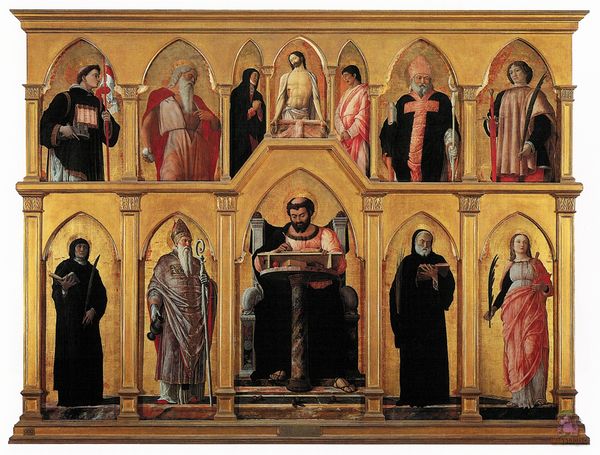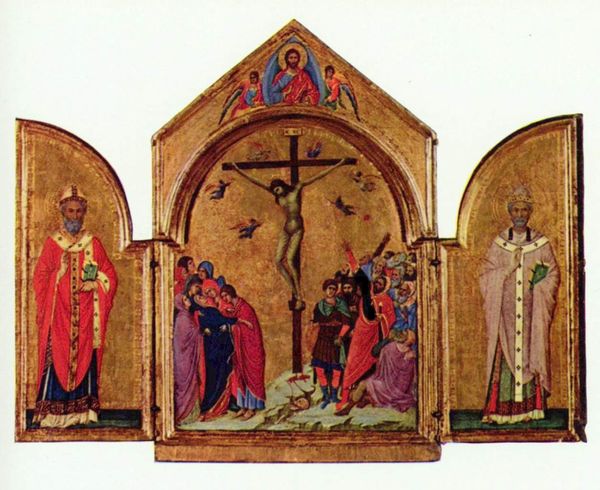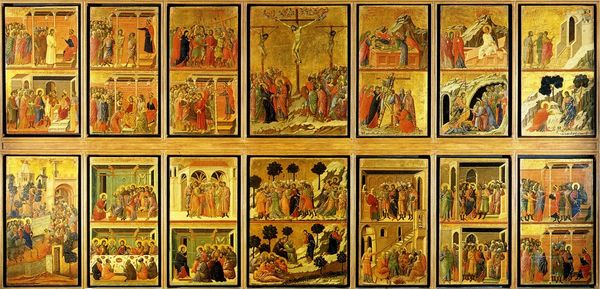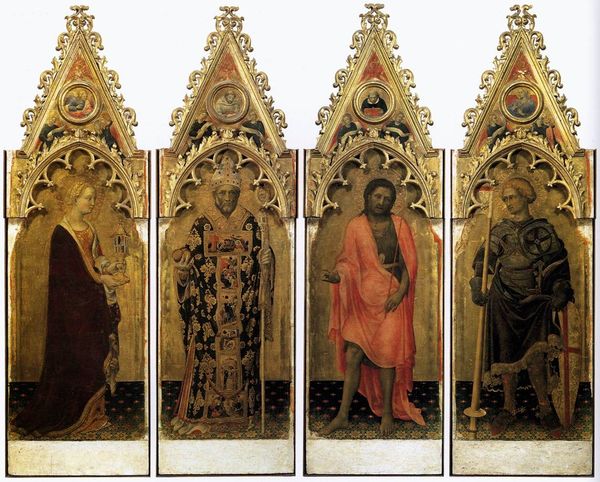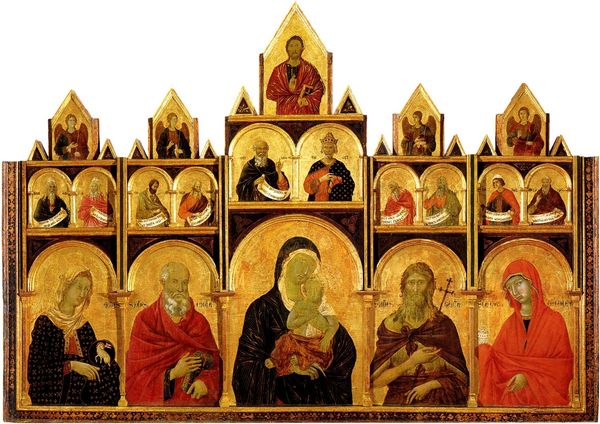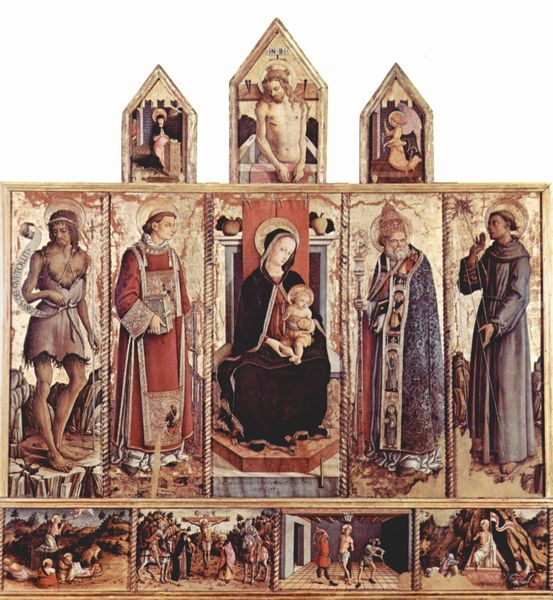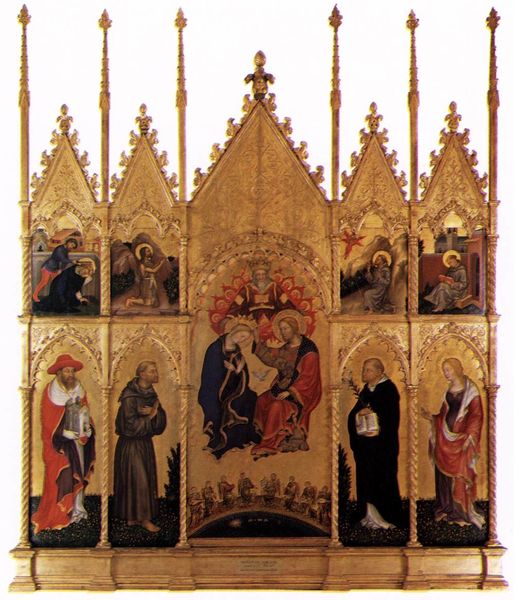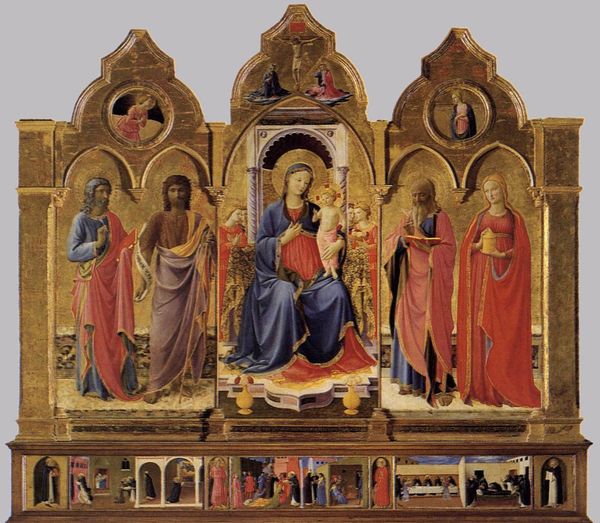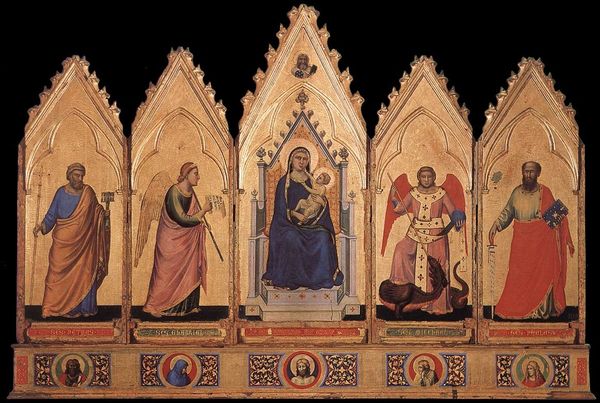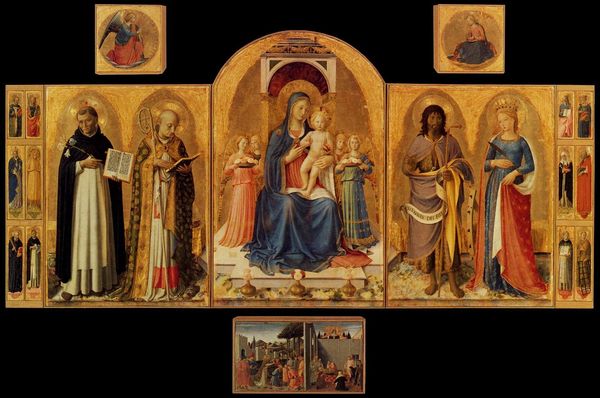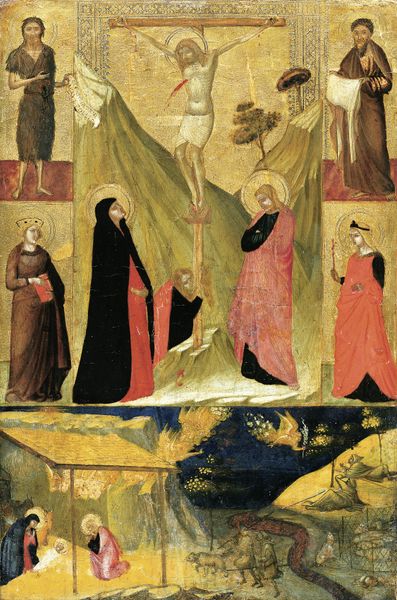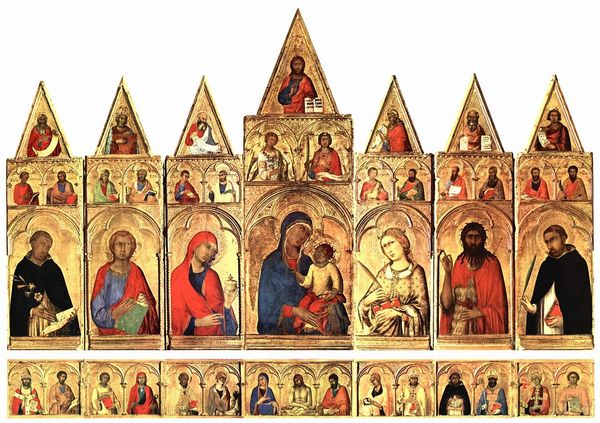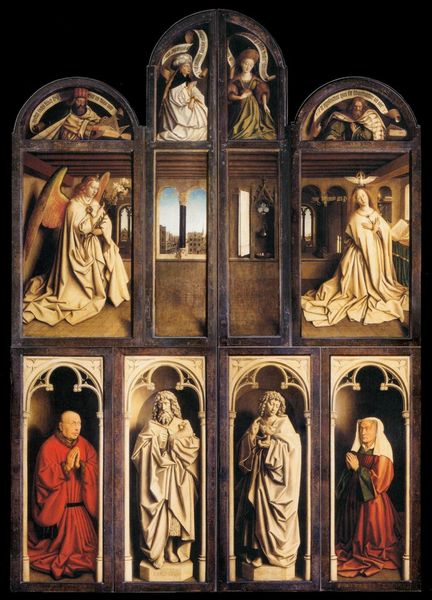
Polyptych of the Misericordia 1462
0:00
0:00
pierodellafrancesca
Museo Civico di Sansepolcro, Sansepolcro, Italy
tempera, painting, oil-paint, fresco
#
tempera
#
painting
#
oil-paint
#
figuration
#
fresco
#
oil painting
#
jesus-christ
#
christianity
#
history-painting
#
italian-renaissance
#
early-renaissance
#
virgin-mary
#
christ
Copyright: Public domain
Curator: Standing before us is Piero della Francesca's "Polyptych of the Misericordia," completed around 1462. It is currently housed in the Museo Civico di Sansepolcro. Editor: My first impression is one of serenity, but also a kind of starkness. The colors are muted, the figures are dignified and almost geometric in their forms. Curator: It’s interesting you pick up on the geometric quality. Francesca was fascinated by mathematics and geometry, influencing his artistic choices. This piece, constructed from oil paint and tempera, is a stunning example of Early Renaissance style. One can almost feel the layering of the tempera beneath the oil paint, providing both luminosity and a tangible materiality. Editor: I am also struck by the arrangement of the panels and how they narrate Christian symbolism. How did socio-political and artistic traditions impact the creation of such an elaborate devotional object? Curator: The polyptych format was quite popular in the 15th century, especially for altarpieces commissioned by religious institutions. Patrons often dictated the iconography and sometimes even the materials. It's likely the confraternity commissioned this particular polyptych and directed aspects like the Virgin of Mercy protecting members of the society under her mantle. Editor: Yes, seeing the Virgin sheltering supplicants certainly conveys its public purpose. But thinking about the materiality: the choice of tempera and oil… what did this say about workshop practices at the time and the rising use of newer media? Curator: Tempera was traditionally favored for its quick-drying nature and matte finish, while the adoption of oil paint in Italian Renaissance art provided richness in color and allowed for a more seamless blending. This polyptych is really exemplary of the stylistic change of that moment, in which these new materials also reflect cultural trends towards different aesthetic standards. Editor: It really compels us to consider how economic and social shifts directly influence not only artistic content, but also production choices in the Renaissance. It’s more than a sacred image. It is an artifact. Curator: Agreed. There's a depth to the material reality of the artwork that enhances our ability to contextualize that historical moment. Editor: Understanding both the artistry and historical situation changes how we reflect upon a single, yet multifaceted, cultural representation.
Comments
No comments
Be the first to comment and join the conversation on the ultimate creative platform.
